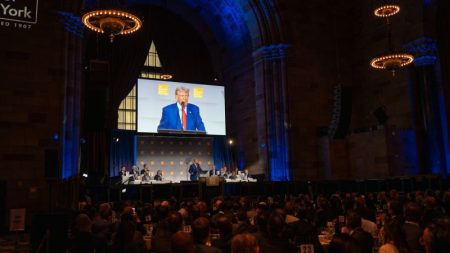Stay informed with free updates
Simply sign up to the Chinese economy myFT Digest — delivered directly to your inbox.
China’s industrial production rose more than expected last month, but retail sales grew more slowly in a sign that weak consumer sentiment was weighing on a recovery in the world’s second-largest economy.
Industrial production grew 6.7 per cent per cent year on year in April, official data from the National Bureau of Statistics showed on Friday, beating a forecast of 5.5 per cent from economists polled by Bloomberg and 4.5 per cent growth in March.
However, retail sales grew only 2.3 per cent from a year earlier, falling far short of an analysts’ forecast of 3.7 per cent and declining from 3.1 per cent growth in March, signalling that authorities will need to strengthen efforts to stimulate domestic consumption.
China’s economy has shown mixed signs of a recovery in recent months, with exports returning to growth in April but domestic sentiment struggling under a deep slump in the property sector.
The government has also indicated it is ready to step up stimulus efforts, with the People’s Bank of China to begin selling Rmb1tn ($140bn) of ultra-long bonds on Friday. Ahead of the sale, a government adviser said the bonds aimed to “give full play to the crucial role of government investment in shoring up economic growth”.
China’s cabinet, the State Council, also announced it would hold a meeting on Friday afternoon to address problems in the housing sector, which has suffered a yearslong slowdown despite numerous initiatives to shore up debt-stricken property developers.
China’s benchmark CSI 300 index of Shanghai- and Shenzhen-listed stocks edged down 0.2 per cent, while the Hang Seng Mainland Properties index, a basket of Hong Kong-listed developers, shed as much as 0.9 per cent before settling to be up 0.4 per cent.
Chinese policymakers have increasingly relied on investment in industry to offset lagging growth in other sectors and take pressure off the ailing property market and deeply indebted local governments. High-tech industrial manufacturing was one bright spot in the April data release, expanding 11.3 per cent on a year earlier.
But the industrial policy is feeding trade tensions with the US and the EU, China’s most important export markets, which have accused Beijing of pursuing unfair trade practices by stoking overcapacity and dumping excess low-cost goods on its markets.
US President Joe Biden this week sharply raised tariffs on $18bn worth of Chinese imports, ranging from electric vehicles to solar cells, in a pre-election effort to protect domestic jobs. The EU has also opened anti-subsidy investigations into China’s EV, wind turbine and solar panel industries.
China has warned it would respond “resolutely” to the US tariffs and accused Washington of violating World Trade Organization rules.
Car production soared 16.3 per cent in April from a year earlier, but sales declined 5.6 per cent, data which “may add fuel to the fire” of charges of Chinese overcapacity, said Lynn Song, chief economist for greater China at ING. He added that consumption growth was “likely to remain moderate” this year “as consumer confidence remains downbeat”.
In other data released on Friday, the NBS said property prices in so-called first-tier cities fell by 2.5 per cent year on year in April. Prices also declined compared with a month earlier, down 0.6 per cent, a decline of 0.5 percentage points from March.
Fixed-asset investment meanwhile grew 4.2 per cent year on year in the January-April period, trailing a Bloomberg analysts’ poll forecast of 4.6 per cent growth and a 4.5 per cent increase in January-March.
Beijing is trying to diversify into developing and non-western markets, particularly as it invests in high-tech goods that compete directly with those in the EU and the US.
Russia’s President Vladimir Putin was in Beijing this week for a two-day state visit, where talks were held on trade, investment, defence and the war in Ukraine.
Read the full article here



